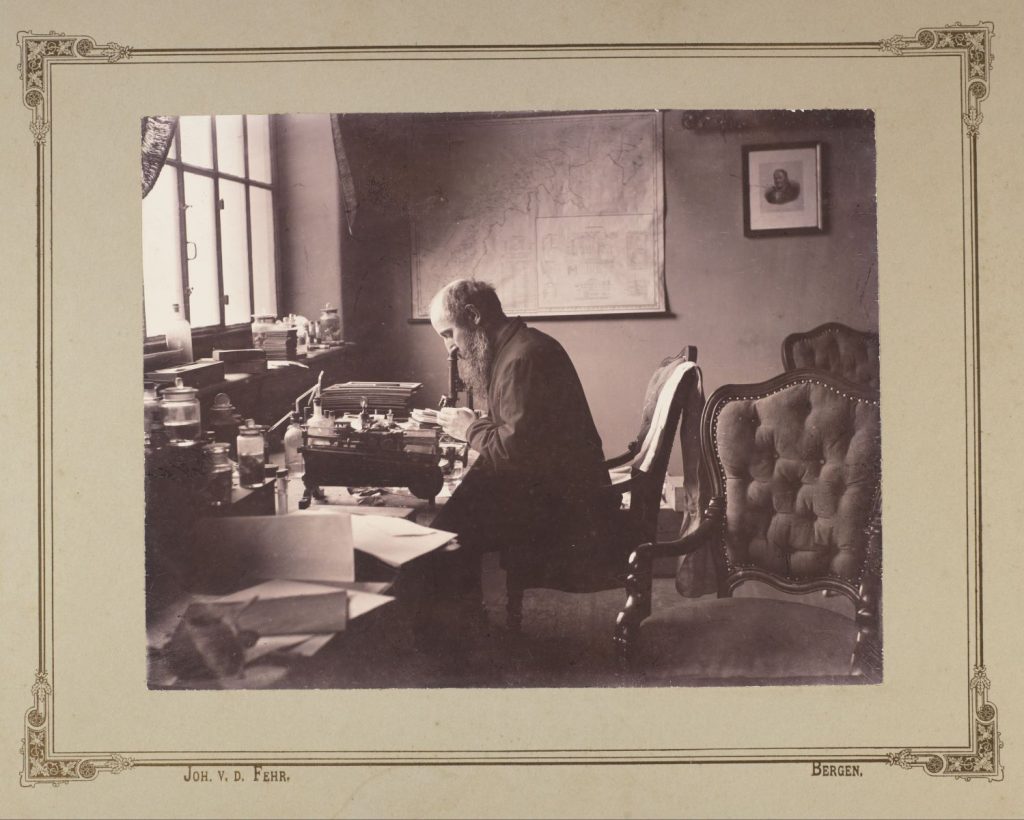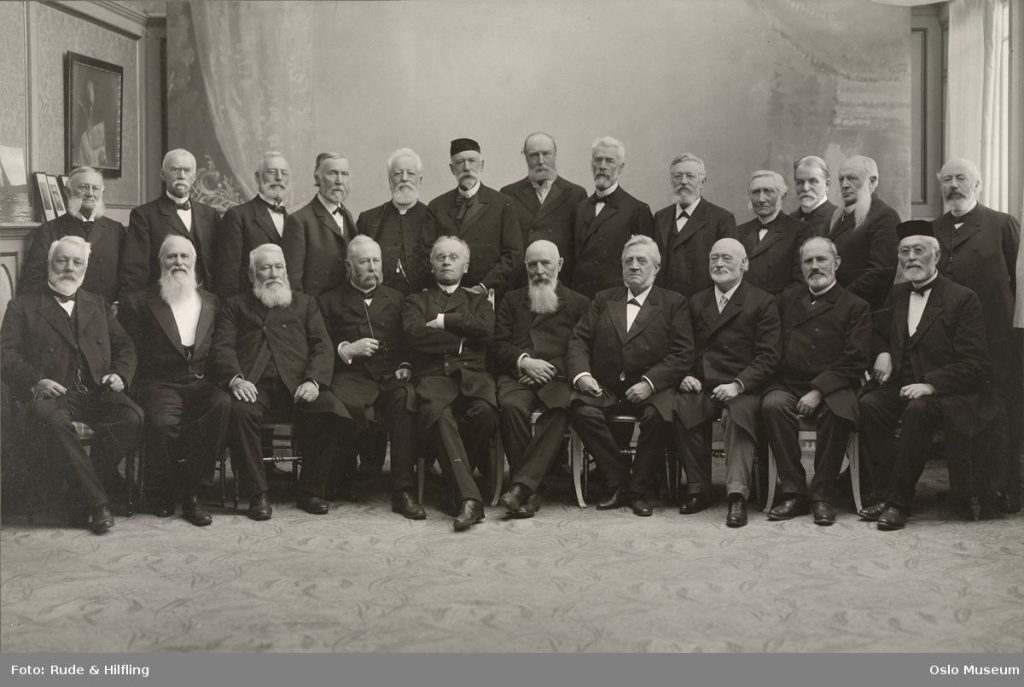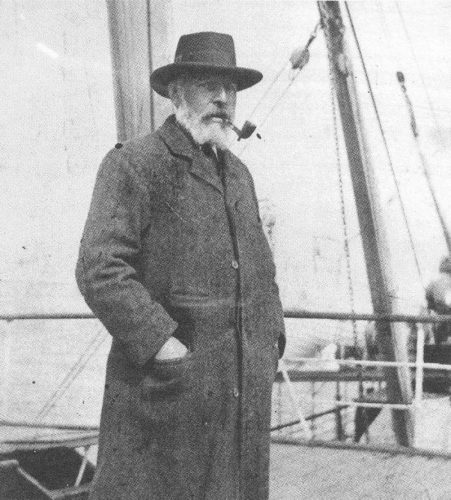Gerhard Henrik Armauer Hansen (1841-1912)
Armauer Hansen is undoubtedly the most famous Norwegian physician of all time, not least because he discovered the leprosy bacterium and thus became the first to identify and describe a bacterium as the cause of a chronic disease. He was also recognised for his epidemiological analyses that supported the theory that leprosy was an infectious disease.

Gerhard Armauer Hansen was born and raised in Bergen and on the nearby island of Askøy. He graduated with a medical degree in 1866 and then spent a year as a house officer at Rikshospitalet Hospital. His first job after this was as physician for a fisheries community in Lofoten in spring 1868.
He returned to Bergen in 1868 and was employed as a physician at the leprosy hospital Pleiestiftelsen for spedalske No. 1. He was also employed as assistant physician under Danielssen at Lungegård Hospital, and was, at the same time, responsible for supervision of the residents at St. Jørgen’s Hospital. Hansen is said to have been the only person who applied for this position.
Right from the start, Hansen is said to have been in opposition to his boss (and, eventually, father-in-law) Danielssen and his heredity theory. By talking to patients, he established that each one of them had at some point been in contact with someone who had the disease, which indicated that leprosy was infectious.
In 1870–1871, he went on a study trip to Bonn and Vienna to learn more about microscopy and the structure of tissue. He also learned about Darwin’s theory of evolution, of which he became an ardent advocate.
In 1875, Hansen took over the post of Chief Medical Officer for Leprosy and led the work on assessing measures to combat the disease. He did the groundwork for the Acts of 1877 and 1895 that provided the legal basis for the isolation of leprosy sufferers, which became models for similar legislation in other countries. His work to combat the disease by means of isolation had major consequences for people with leprosy worldwide.
In 1880, he was dismissed by court judgement from his position as physician at Pleiestiftelsen Hospital following an experiment he conducted on a patient. He retained the position of Chief Medical Officer for Leprosy until his death in 1912, and, among other things, made a study trip to the USA to investigate leprosy among immigrants from Norway.
From 1880, his workplace was at Bergens Museum. In addition to medicine, he also contributed to a number of biological and zoological studies. He became chairman of Bergens Museum and was both editor and contributor to the popular scientific journal ‘Naturen’. He held a long series of lectures and wrote about Darwin’s teachings and other topics for newspapers and journals.
Hansen received a number of international honours for his discovery of the leprosy bacterium. He was made Knight First Class of the Order of St. Olav in 1892 and Commander with Star in 1909. In 1909, he served as Honorary President of the Second International Conference on Leprosy held in Bergen. Hansen was also a member of the International Leprosy Commission for many years.


Photo. Johan von der Fehr.

Photo: Rude and Hifling. Oslo Museum.

Photo: Bergen City Museum.

Photo: Bergen City Museum.



